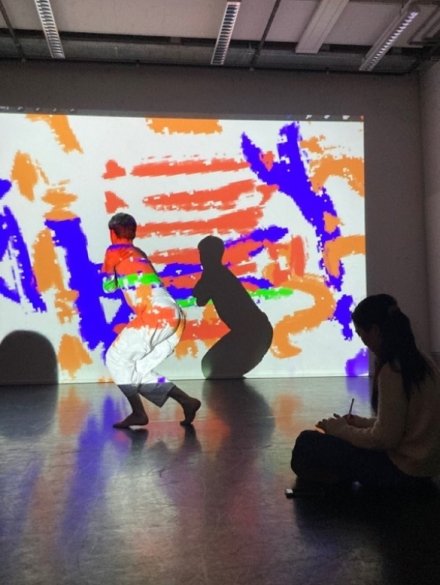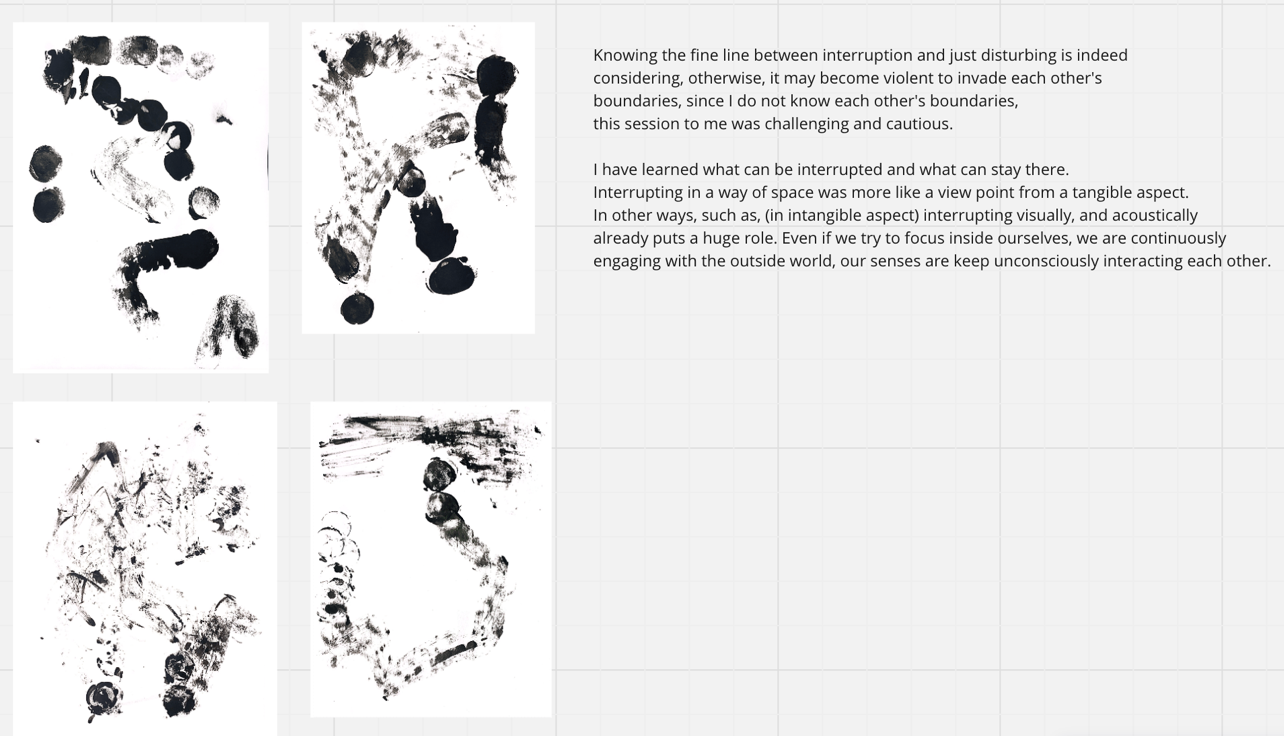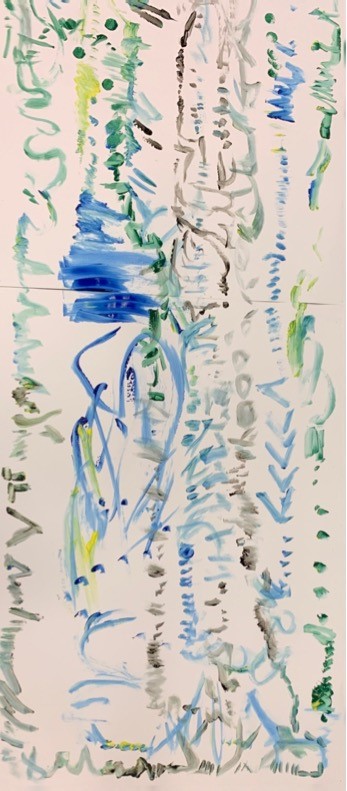How post-capitalist mushrooms brought together three students in the Honours Lab
- Design
- Music
- Dance
Lena Chen, Patrick Wiel and Soyoon Cha never thought they’d cross paths at ArtEZ. Indeed, the three students, all different ages, from different departments, at different stages of their studies, statistically have a small likelihood of ever collaborating. But the ArtEZ Honours Lab gave them the opportunity to co-create an exploratory project like one they had never experienced before.

The ArtEZ Honours Lab is a voluntary, extracurricular programme that offers ArtEZ students the opportunity to engage with contemporary theory, art practices and forms of research in a multidisciplinary context. The Honours Lab offers several tracks per year, each consisting of an in-depth course and workshopping time to realise a project idea with students from other departments. For Lena, a second-year student in the master’s course Sound of Innovation in Enschede, participating in the Honours Lab was a choice she made to delve deeper into her final research topic: performance as a metaphor for post-humanism. She was interested in the “How to Land on Earth Anew” track, which she took alongside Patrick, Soyoon and a few other students.
Both Lena and Soyoon also missed interactions with students from other ArtEZ locations. Soyoon, a third-year student in the bachelor’s course Graphic Design student, wanted to look beyond the usual pragmatic approach of graphic design into something more experimental in a group setting. Patrick, a third-year student in the bachelor’s course Dance Artist, previously had a wonderful experience in 2022 at the Honours Lab. He wanted another experience of a more philosophical side to learning in order to holistically develop his own artistic toolkit.
Inspiration from the Mushroom at the End of the World
All three got what they hoped for from their three-part collaboration. A thematic interest for all of them was ecology, so, appropriately, they took inspiration for the project from the book “The Mushroom At The End Of The World,” by Anna Tsing. The three took three keywords from that text as the foundational exploratory principle: polyphony, assemblage, and precarity. Lena, Patrick and Soyoon wanted to explore how their three artistic mediums could work together to embody the concept behind those keywords. They mapped their progress through a digital inspiration board, and these explorations crystallised into jam sessions.

A glimpse of a digital inspiration board that the group made, with reflections and graphic scores.
“We don’t have to be united to do something meaningful”
Patrick explains the word choice: “All three words somewhat fit together and also somewhat don’t. With polyphony, the idea was that we don’t have to be totally united to do something meaningful or beautiful. We can stay in polyphony with each other.” The same applies to assemblage, which “runs counter to the word community,” Patrick remarks. “Community implies a collective togetherness in harmony, whereas assemblage leaves more room for different kinds of relationships and individuality within a sum of voices.”
And then there is precarity. In this project, “we are always improvising and reacting to the others. That puts each of us in a precarious place,” Patrick points out, “because we are always a little out of control. We tried to embrace this in-flux feeling, navigating ourselves in this ever-shifting precarious space.”
The Honours Lab gave me the opportunity to let ourselves see how the process played out organically, rather than focusing on the results.”
The project’s unstructured, fluid nature
Their project, which never had a name, evolved through a series of six jam sessions The final performance was a 15-minute live jam session, inspired by their explorations in their previous sessions.
Notably, no one was the “leader” at any given point during the project. While the three group members used their respective disciplines to create and respond to the others, the group describes the project as a never-ending feedback loop of all three members. “We were all constantly reacting to everything from all sides,” Soyoon says. Her contribution was an improvised graphic score, Patrick provided movements, and Lena created the music.

An example of an early draft of a graphic score for the project.
For Lena, the sessions were all about responding in the moment without any preconceived ideas, using her intuition as a guide. This resulted in a timeless feel: “there was one session we did where we forgot to press the timer,” Lena recalls. “It felt like 20 minutes had passed, but when I went to stop it, it had been almost an hour! This raised an interesting question for us: in an improvised performance, how do you define the beginning and the end? Once the timer is off, no one is able to tell.”
The group explored this question in their jam sessions as a way to embrace the inherent ambiguity in their artistic process. Soyoon: “Normally in my course I try to structure things out. But in our collaboration, we didn’t know what we were going to do or what was going to happen - which was the point. The Honours Lab gave me the opportunity to let ourselves see how the process played out organically, rather than focusing on the results.”
Because the Honours Lab is a safe space to explore, I learned that the process is so much more important than a complicated end result.”
The result of the Honours Lab
For all three group members, the artistic process they experienced during the Honours Lab was most significant. Soyoon reflects that, “normally when I create a work, when I finish it, my engagement with the work is also finished. However, in the same vein, when a project is finished, it also has no vision for itself outside of the present moment. Trying out this new, exploratory way of working in the Honours Lab helped me see what my artistic approach could be like in the future.”
Soyoon adds: “The interdisciplinary structure of the Honours Lab is really different than a multidisciplinary approach. With interdisciplinary learning, I feel that I am learning from the inside of my heart, from a person to a person, as opposed to simply interacting with and combining several artistic disciplines.”
Lena remarks that she learned the artistic result does not always need to be very complex: “Because the Honours Lab is a safe space to explore, I learned that the process is so much more important than a complicated end result.” In agreement with all of the above, Patrick also points out how much he learned about how people from other disciplines think and react. “Whether you’re jamming or performing together, you learn several valuable, small ways to find mutual understanding in an interdisciplinary environment. This can even be in practical ways, like how long it takes someone to set up a mixer.”
Advice for students interested in the Honours Lab
When asked if they had any advice for students curious about taking the Honours Lab, Lena advises them to be patient. Lena: “Give the Honours Lab a chance, because it takes some time to be able to immerse yourself in this kind of space.”
Patrick emphasises not feeling intimidated by the Honours Lab content. “At the Honours Lab, we discuss many philosophical and theoretical concepts. It might feel intimidating at first, like you don’t have an opinion on any of it. Along the way, however, you realise you do have a lot to say, and that you can trust yourself to take something meaningful from the texts.”
Lastly, Soyoon remarks that “the Honours Lab is not just about reading text, but about elevating it together. There’s a lot to learn from that process, so trust it.”
Interested in participating in the Honours Lab?
Then check out the website for more information. On this page, you will also find more initiatives and reading material for students who could use an extra dose of research during their studies."